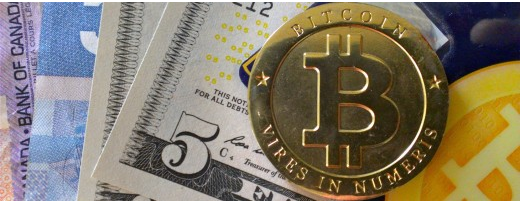While some people are debating about the future of this coin called “bitcoin”, it is upto you to decide after reading this article whether this currency has any future or not. Some talk against it as they might have an agenda against the bitcoin, and some advocate its usefulness.

It all started back in 2008 when bitcoin was first introduced but since then it has been influenced by a diverse range of factors that made it one of the most volatile currencies in the world. Despite such volatility, more than 100,000 bitcoin transactions are taking place every day and the volume continues to grow due to the ‘permissionless innovation’ provided by the bitcoin technology, the blockchain.
As the blockchain matures, bitcoin will be able to perform similar financial services, with functions like retail banking(Circle), exchanges(Coinbase) and payment processors(bitnet) being created. How it all started off, and where will it go next? We’ll discuss some milestones in the history of “internet of money” and look to where it might be headed in the future.
Timeline of the “Internet of Money”
August 2008
An application for an encryption patent application was filed by three individuals Neal Kin, Vladimir Oksman, and Charles Bry. All three denied having any connection to Satoshi Nakamoto, the alleged originator of the Bitcoin concept. Even though the three denied there involvement, they registered Bitcoin.org in the same moth on anonymousspeech.com- a website that allows people to buy domain names anonymously.
October 2008
Satoshi Nakamoto releases his whitepaper, detailing his idea for a pure peer-to-peer electronic cash to the world. In his vision, he outlines and solves the problem of money being copied, providing the basic foundation for Bitcoin to grow legitimately.
January 2009
The first block, named as genesis is launched allowing the initial mining of “Bitcoins” to take place. Later that month, world’s first Bitcoin transaction takes place between Satoshi and Hal Finney, who is a developer and cryptographic activist.
October 2009
Bitcoin first receives its value against the traditional currencies. The New Liberty Standard declares the value of a bitcoin at at $1 = 1,309 BTC. The equation was derived keeping in mind the cost of electricity to run the computers that created Bitcoins in the first place.
February 2010
The world’s first Bitcoin market is established by the now defunct dwdollar.
May 2010
A programmer in Florida named as Laslo Hanyecz sends 10,000 BTC to a volunteer in England, who spent about $25 to order a pizza from Papa John’s for Hanyecz. Today that pizza is valued at £1,961,034 and is considered as a major milestone in Bitcoin’s history.
August 2010
The golden run for the Bitcoin ends, is hacked. A vulnerability in how the system verifies the Bitcoin is discovered, leading to the generation of 184 billion Bitcoins. The value of the currency nosedives from an all time high of $1 in June and hits the floor.
October 2010
Bitcoin comes under Government scrutiny. After the hack in August – and other faults in the system of blockchain in september- an inter-governmental group publishes its report on money laundering using new payment methods. It was suspected that Bitcoin could be used to finance terrorist groups.
November 2010
Based on the number of Bitcoins in circulation in the marketplace the valuation of Bitcoins surges to $0.50/BTC.
March 2013
The US Financial Crimes Enforcement Network issues issues Bitcoin regulation in the form of a guidance report regulating the use of Bitcoins by the people administering, exchanging or using the virtual currency. Bitcoin’s market capitalisation reaches $1 Bn.
November 2013
Price of the Bitcoin climbs to $700 in as the US Senate holds its first hearings on the digital currency. The then time Federal Reserve Chairman, Ben Bernanke, likes the idea of Bitcoin currency. In his letter to the Senate Homeland Security and Governmental affairs committee, Bernanke states that Bitcoins hold a long term promise, particularly if innovations promote a faster and more secure payment systems.
December 2013
China’s Central Bank bars all financial services from trading or handling Bitcoin transactions on the grounds that bitcoin is not a currency with “real meaning” and does not have the same legal status as fiat currency. Bitcoins posed a threat to China’s capital controls and financial stability. Today China has become the world’s biggest Bitcoin trader, with 80% of the Bitcoin transactions being processed in China.
June 2014
The US Government auctions off more than 29,000 Bitcoins seized from Silk Road, the illegal drug marketplace. The sale and closure of the auction gave more teeth to Bitcoins and helped it gain more legitimacy and also demonstrated that bitcoin is not an easy way for criminals to avoid the rule of law.
July 2014
The ‘Bit Licence’ edges towards reality as the New York State Department of Financial Services releases its first draft regulating the use of virtual currencies. On the other side, European Banking Authorities also give their opinion on ‘virtual currencies’. Their analytical report recommends that EU legislators consider declaring virtual currency exchanges as ‘obliged entities’ but also stated that it must comply with anti-money laundering and counter-terrorist funding requirements.
December 2014
Tech Giant Microsoft begins accepting Bitcoin payments.
January 2015
By now Bitcoin had already gained popularity worldwide. So the New York Stock Exchange became the minority investor in Coinbase’s $75 Mn funding rounds. In a statement, NYSE aims at tapping into the new asset class by bringing more transparency, security and confidence to bitcoin.
